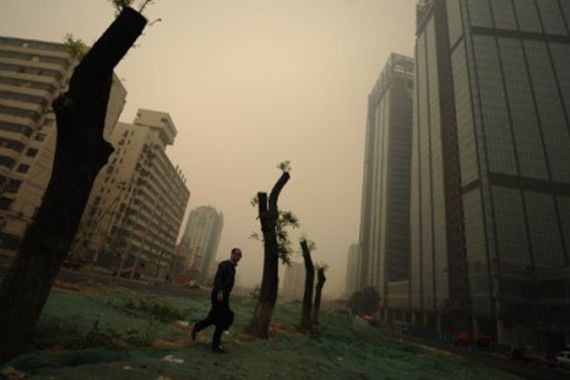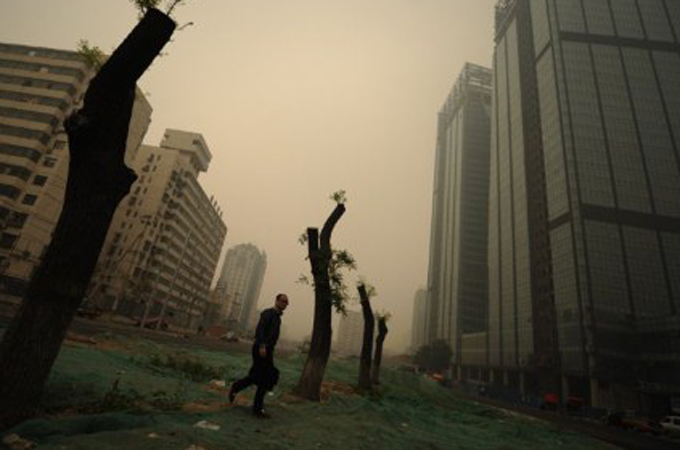Smog related illnesses “spike” in Beijing
A mixture of pollution and fog have been to blame in health issues and transportation delays across China

 |
| A man walks through heavy pollution on a street in Beijing on Monday [AFP] |
Since late last week, eastern and central China have been dealing with some very foggy conditions. Initially described as “advection fog”, which occurs when moist air passes over a cooler surface, it has now changed into the dense and polluted phenomenon known as “smog”, a mixture of pollution and fog.
Normally the worst effects that would be seen with fog would be reduced visibility affecting ground and air transportation. But with this dense moist air mixing with airborne pollutants over time, we are also now dealing with a significant health hazard.
Keep reading
list of 4 itemsAfter the Hurricane
World’s coral reefs face global bleaching crisis
Why is Germany maintaining economic ties with China?
Across the region, there has been a significant 13% increase of repiratory related problems, including asthma, bronchitis and pnuemonia, as well as a sharp rise in reported strokes.
The Beijing Meteorological Bureau (BMB) has issued four yellow alerts for dense fog in the last two days, cautioning residents to limit their time outside.
According to the Beijing Municipal Environmental Protection Bureau’s guidelines, the Air Pollution Index (API) Monday was between 150 to 170, indicating “slight” pollution.
However, a microblog post from Zheng Yuanjie, a famous writer, captioned his picture of the Beijing sky with “the air smells like sulfur perfume, as the capital city currently looks like a poisonous huge gas can,” questioning the bureau’s description of “slight” pollution in the capital. The American Embassy is contradicting the API index of “slight” and is saying that Beijing has reached “hazardous” levels.
Air traffic in and out of Beijing Capital International Airport has also been affected. By Sunday evening, 163 flights were cancelled. The BMB is forecasting that the dense “smog” may not clear until the weekend.